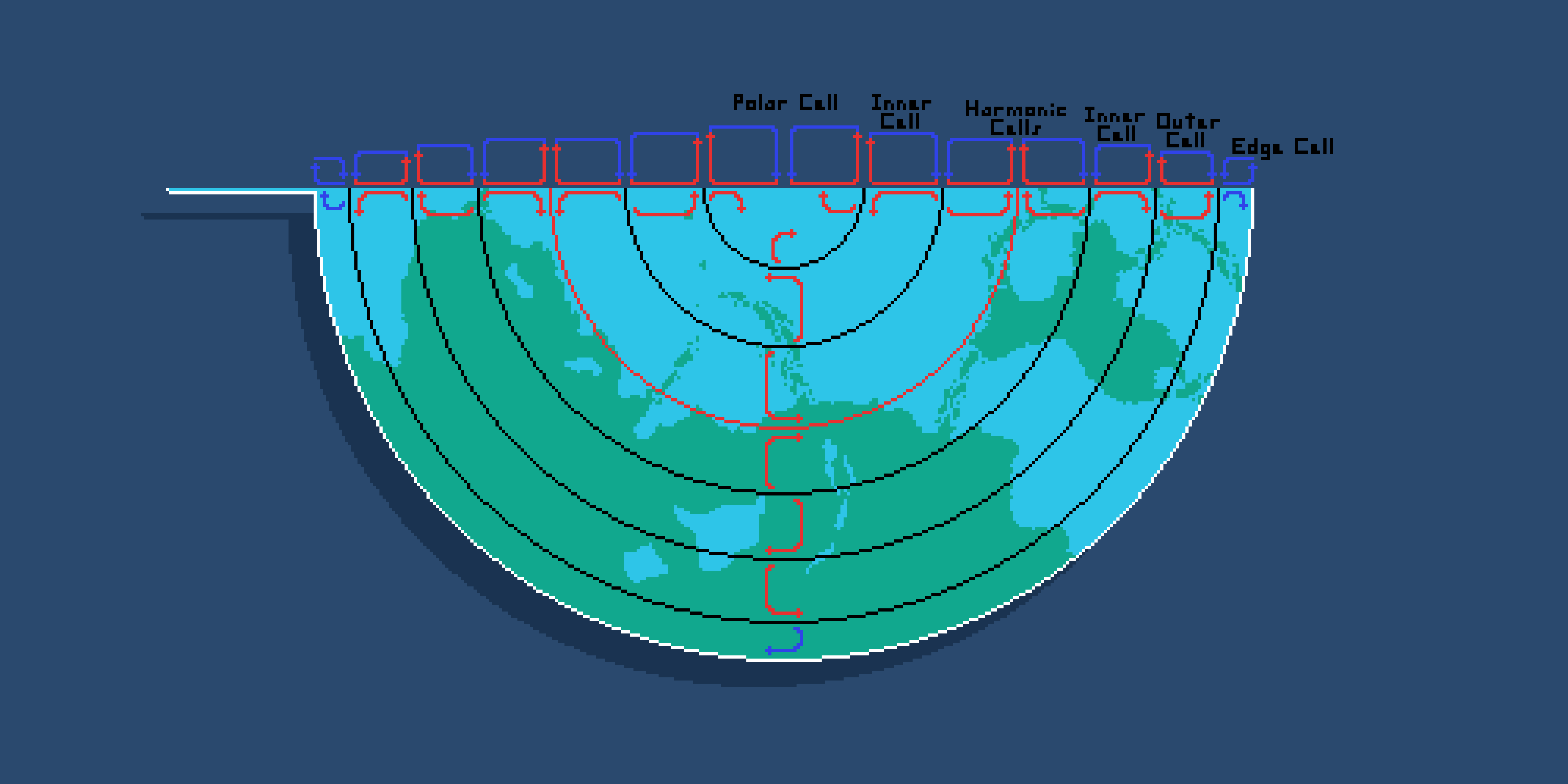Atmospheric cells are complex and chaotic natural phenomena that occur as a result of many other factors across the Plane. Atmospheric cells are critical to the theory of atmospheric circulation and are responsible for the proper movement of air through the atmosphere. Cells develop because of interactions between the heating and gravitational pull of the Harmonic Treaty and the friction caused by the Plane’s rotation.
As the Harmonic Treaty makes its trip around the Plane the gravity it exerts pulls the air in the atmosphere along with itself. Alongside this, as the Treaty exerts heat it warms the nearby air, causing it to rise. This effect creates a vortex which pulls more cold air in to replace the rising warm air and is what circulates warm air throughout the entire Plane.
The Cells
There are seven total cells across the Plane, 3 of which are located in the inner circle and the remaining 4 in the outer ring. This disparity is caused by the expansion of air as it moves outwards towards the edge, and inversely the compression of the air as it moves inwards towards the pole. Pictured1 is a model of the atmospheric cells.
Starting at the harmony line and moving inwards towards the pole:
- The inner Harmonic Cell lasts from the harmony line to 2,528km from the pole;
- The Inner Cell goes from the inner edge of the Harmonic Cell to 1,789km from the pole;
- And lastly, the Polar Cell goes from the inner edge of the Inner Cell to the pole.
Starting at the harmony line and moving outwards towards the edge:
- The outer Harmonic Cell lasts from the harmony line to 5,692km from the pole;
- The Inner Cell goes from the outer edge of the Harmonic Cell to 7,006km from the pole;
- The Outer Cell goes from the outer edge of the Inner Cell to 8,319km out from the pole;
- The Edge Cell goes from the outer edge of the Outer Cell to the edge of the pole.
See Also
This article is considered complete for the moment, but is missing sections which can be elaborated on as the setting develops! If you think it needs expansion now, suggest an edit through a GitHub issue!
This article can use a section on how it was discovered.
